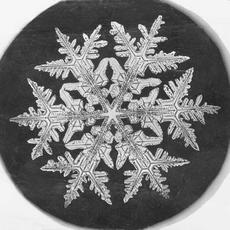Blogs across the Smithsonian will be giving an inside look at the Institution’s archival collections and practices during a month long blogathon in celebration of October’s American Archives Month. See additional posts from our other participating blogs, as well as related events and resources, on the Smithsonian’s Archives Month website.
Over the past month, we’ve been highlighting the things that are in the Smithsonian Institution Archives for American Archives Month. But what about the things that aren’t in the archives of the Smithsonian?
In celebration of Archives Month, and to clear up any confusion once and for all, here are the top six Smithsonian archives related myths I (and our archivists) often hear:

- The Smithsonian does not have a freezer full of individual snowflakes in its archives (neither in our collections or any of the other archives across the Smithsonian). I see this one on Twitter all the time, and though it’s amazing sounding, it’s not true. However, we do have some incredible photographs of individual snowflakes in our collections, made by “Snowflake” Bentley in the early 1900s. (PS: You can see more of these photos on the Flickr Commons, and we even have some nifty craft templates made from Bentley’s snowflakes for you to use—perfect as the weather gets frostier!)

- The Smithsonian is not archiving all tweets on Twitter. As the keepers of the Institution's history, the Smithsonian Institution Archives does archive many of the tweets of the Smithsonian’s 82 Twitter accounts (most of which can be found here). But sorry guys, we are not archiving all of your tweets in the Archives. Never fear though—the Library of Congress is archiving your public tweets for posterity’s sake.

- The National Archives and the Library of Congress in Washington, DC are not a part of the Smithsonian. We love these wonderful organizations, but they’re not affiliated with the Smithsonian’s 19 museums and galleries, the National Zoological Park, and nine research facilities (which also include many archives).
- There is not an underground storage facility or archive under the National Mall. As Around the Mall blog and others have reported, this myth may have been perpetuated by the movie Night at the Museum, but there are no storage facilities under the Mall. However, there are unused tunnels under the National Mall that connect the Smithsonian Castle and the National Museum of Natural History. These two buildings once shared utilities and so the tunnel was built in 1909 as a necessary entryway for maintenance.
- The Smithsonian Institution Archives is not responsible for all of the Smithsonian's collections.
Each museum, archives, or other collecting unit within the Smithsonian has its own specialty and is responsible for cataloging, storing, and preserving its own objects, artwork, and other collections. So, not all of those 137 million artifacts, works of art, and specimens in the Smithsonian's collections that you hear about are here in the Archives! But the Archives does hold the records that document the history of the Smithsonian—its people, its programs, its research, and its stories.
own objects, artwork, and other collections. So, not all of those 137 million artifacts, works of art, and specimens in the Smithsonian's collections that you hear about are here in the Archives! But the Archives does hold the records that document the history of the Smithsonian—its people, its programs, its research, and its stories. - The Smithsonian Institution Archives does not hold any Nostradamus manuscripts. This is a bizarre one. Since 2008, I’ve often seen blog posts that claim that a Professor Eugene Randell of the Smithsonian Institution Archives released new Nostradamus predictions found in a rare Nostradamus manuscript. In fact, there is no Eugene Randell on staff at the Smithsonian (and while many Smithsonian employees do have doctorate degrees, and some do teach, we don't really have professors on staff). Finally, neither the Archives nor the Smithsonian Institution Libraries (two separate units at the Smithsonian) have Nostradamus manuscripts.
All that said, there are many collections at the Archives that we hope you enjoy. Happy Archives Month!
Produced by the Smithsonian Institution Archives. For copyright questions, please see the Terms of Use.

Leave a Comment